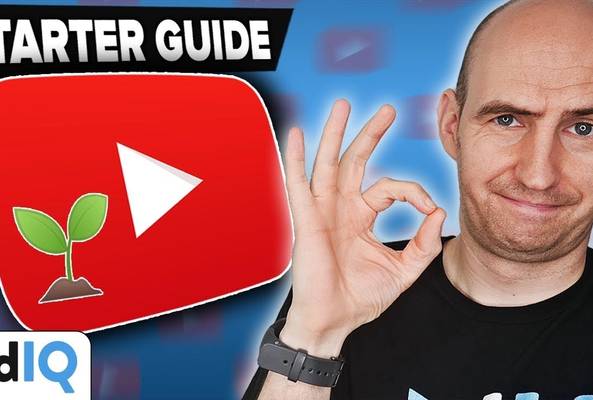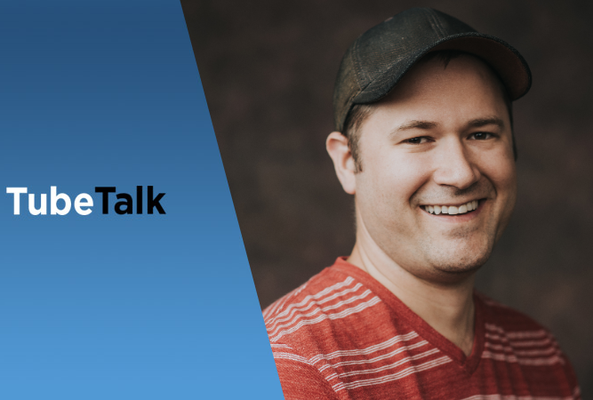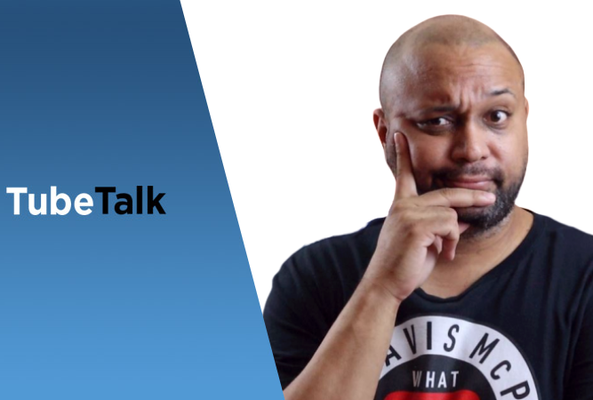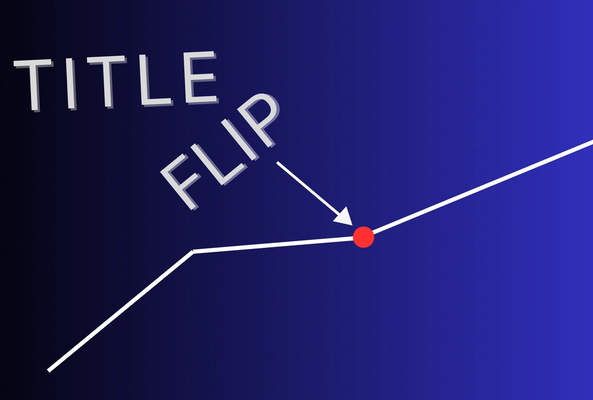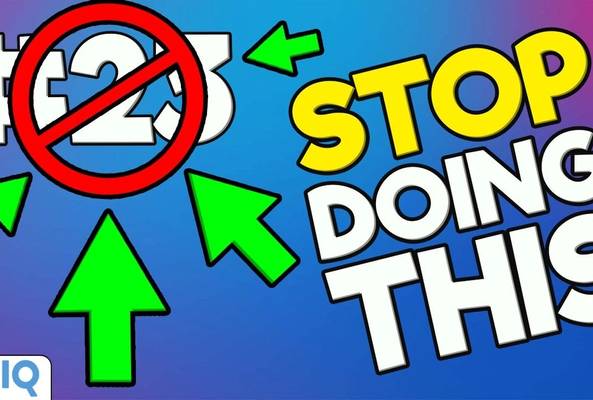Lydia Sweatt is a writer who loves balancing her article/blog time indoors with a healthy dose of nature. She bikes, hikes, and identifies edible plants along the way.
How to Start a YouTube Channel in 2025: Step-by-step guide
Starting a YouTube channel has many benefits, some of which are too enticing to ignore. The first perk? You get to create content from the heart and share it with like-minded viewers around the world. And eventually, you'll build a community where thousands of people (or even millions) look forward to watching your videos.
If all of that goes well, you'll reach a point where you can monetize your videos, earn a full-time income, or even build a business.
Our brilliant creator Rob spoke about how to be a YouTuber in extensive detail and covers all the latest updates. While the number of tips on this topic is endless, new creators need to focus on certain aspects more than others. Getting your YouTube channel setup right from the beginning makes everything else easier, from uploading to monetizing.
It's important to remember that you aren't the only person trying to become a content creator on YouTube. There are millions of channels, and the people behind them want the same thing as you: creative expression, financial freedom, and a community.
That's why you should learn how to start a successful YouTube channel. With so much competition, you'll need tips and strategies to begin your journey the right way.
1. Create a Google Account
Your YouTube adventure starts here. If you haven't set up a Google account yet, the process is basic. Just visit the Google sign-up page and enter your details to get started.
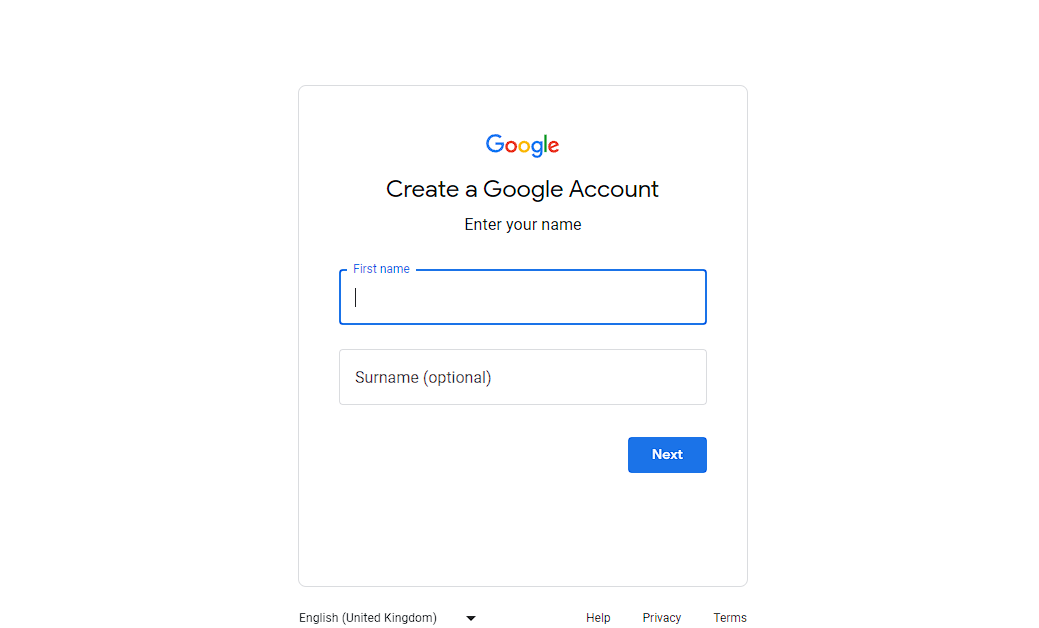
Next, you have to provide some more basic information about yourself.
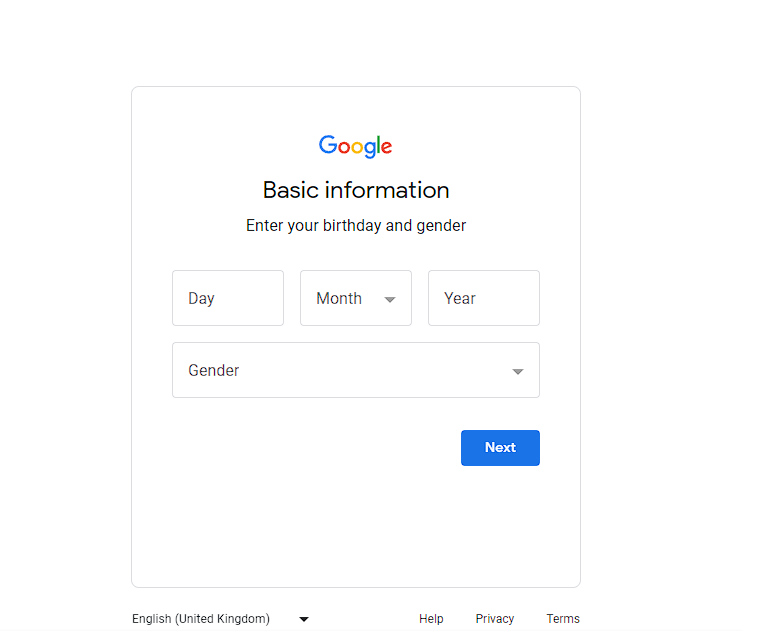
And it’s that easy! You now have a Google account.
It’s good to have a Google account to create your YouTube channel, simply because of the ecosystem that Google has built. Even earning on YouTube happens through a Google AdSense account, which is fairly easy to set up.
Read More: Google AdSense 101: How to Benefit from Ad Revenue on YouTube
Q: Can I create a second YouTube channel with the same Google account?
A: Yes, you can. YouTube lets you manage multiple channels under a single Google account by creating what’s called a Brand Account. This makes it simple to switch between channels without logging in and out of different accounts. Many creators use this setup to run separate channels for different niches, businesses, or content styles. Just remember to keep each channel’s branding and content focused so they can grow independently.
So, now that you have your Google account set up, let’s start creating your channel!
2. Create a YouTube Channel in 4 Steps
Before uploading content, make sure you understand how to set up a YouTube channel with the right branding and description.
Setting up your YouTube channel is quick – it takes just a few minutes. Follow these four easy steps to get your channel up and running:
1. Sign in to YouTube.
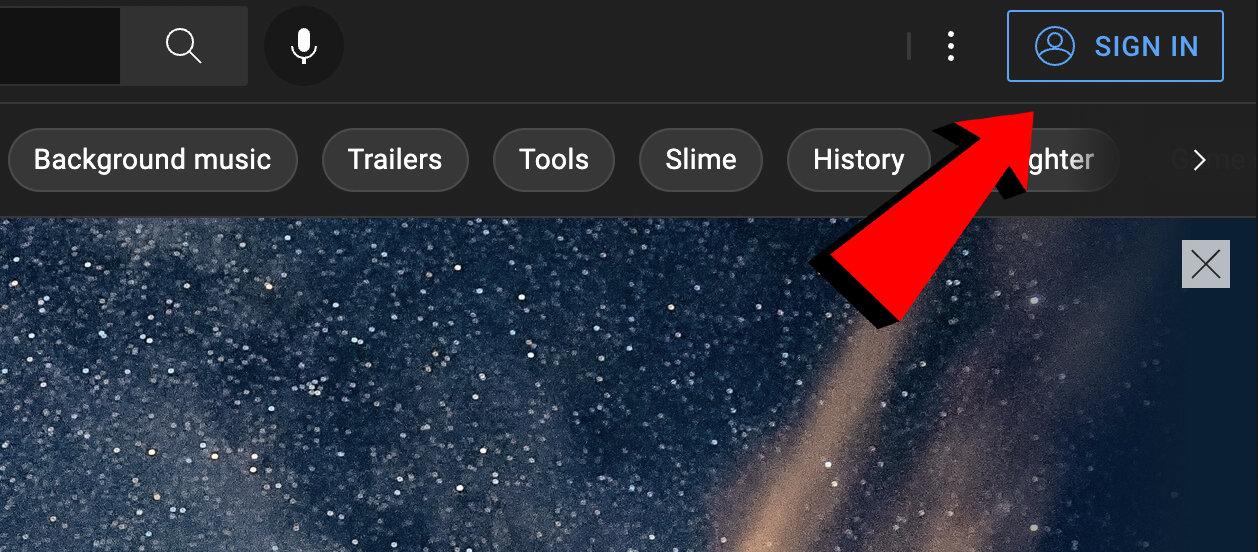
2. Click your profile picture in the top right corner and select Create a Channel from the menu.

3. Upload a profile picture and type in your channel's name.
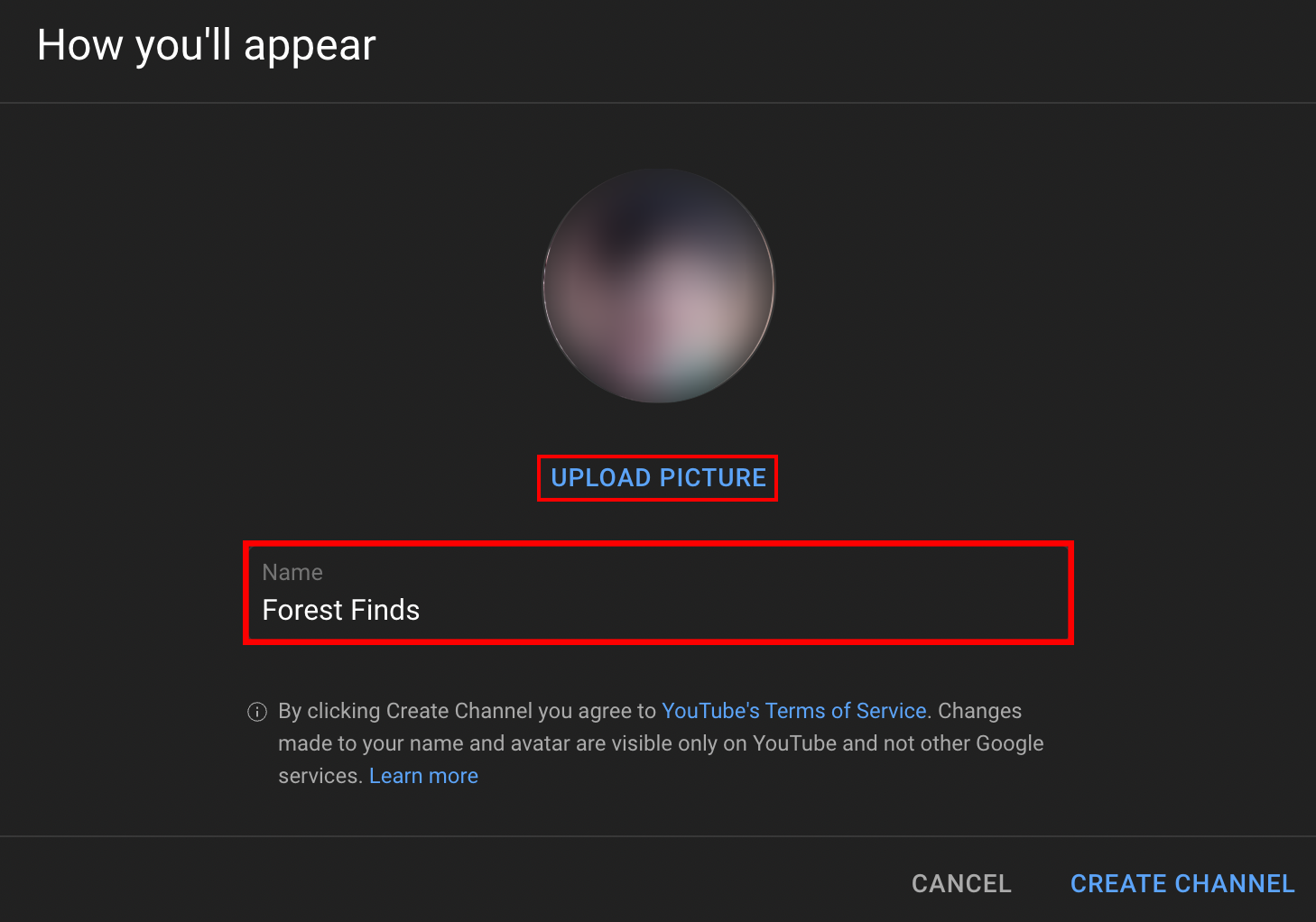
Profile pictures should be:
- Square or round
- 800 X 800 px
- JPG, GIF, BMP, or PNG
Q: What if I don’t have a profile picture?
A: If you don’t have a profile picture at this moment, no big deal. You can always add it later and get to creating your content first.
And if you need it, here's a guide for creating the best YouTube channel name.
4. Click Create Channel in the bottom right corner.

Pro Tip: If you want to see creative channel name options, try vidIQ’s Channel Name Generator.
Verify Your Phone Number with YouTube
Once your account is ready, verifying your phone number opens some key features. This step lets you upload videos longer than 15 minutes, use personalized thumbnails (great for catching the eye), live stream, and challenge Content ID claims if needed.
1. To verify your phone number, click your profile picture again and select YouTube Studio from the menu.
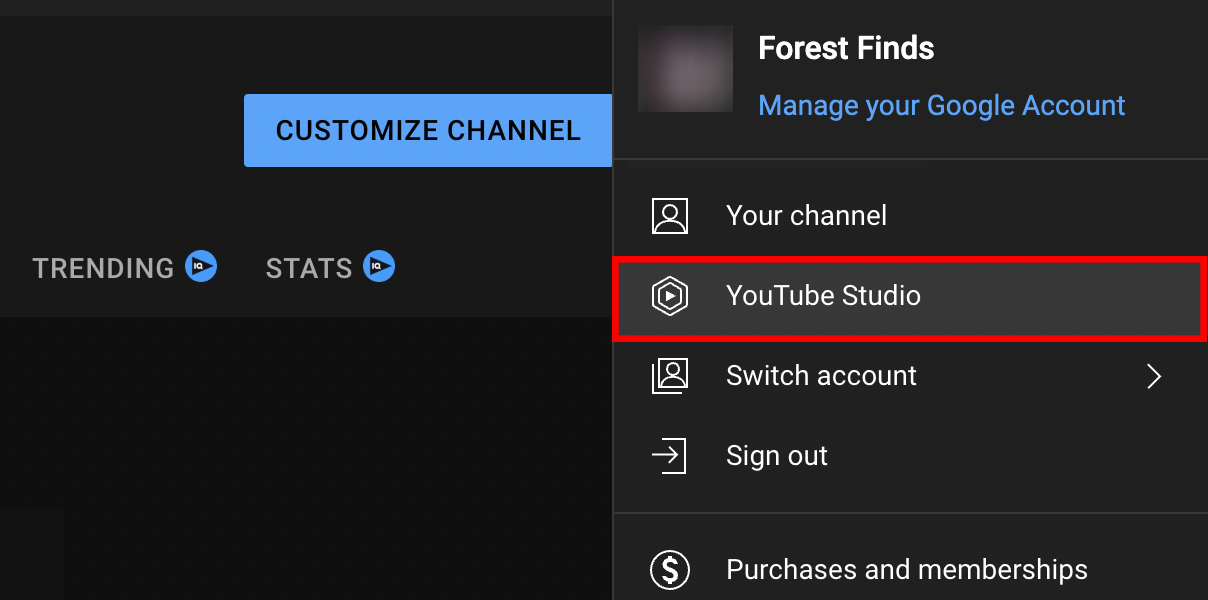
2. Click Settings in the left navigation bar.
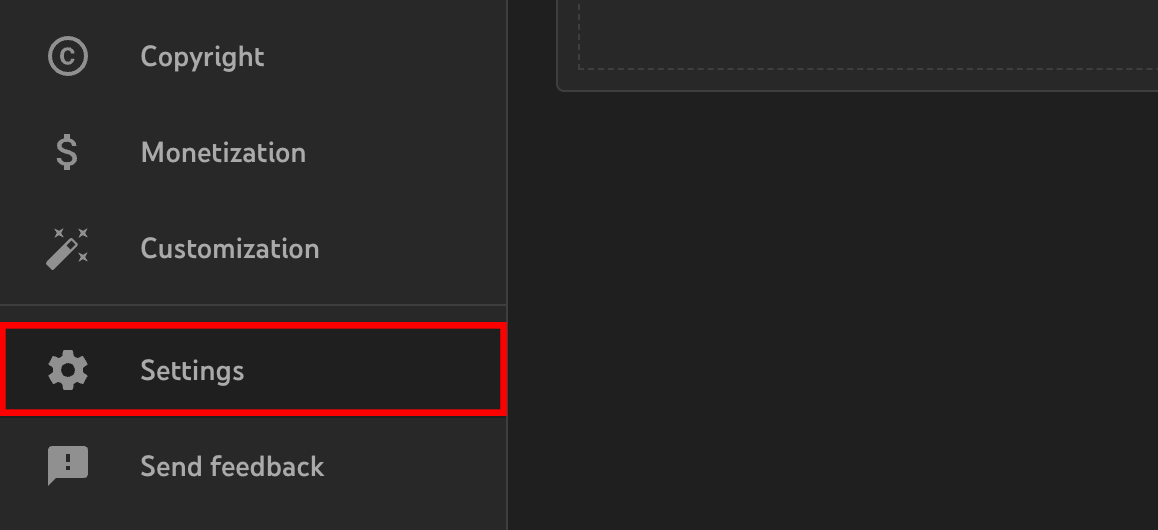
3. Click the Channel tab, then select Feature Eligibility.
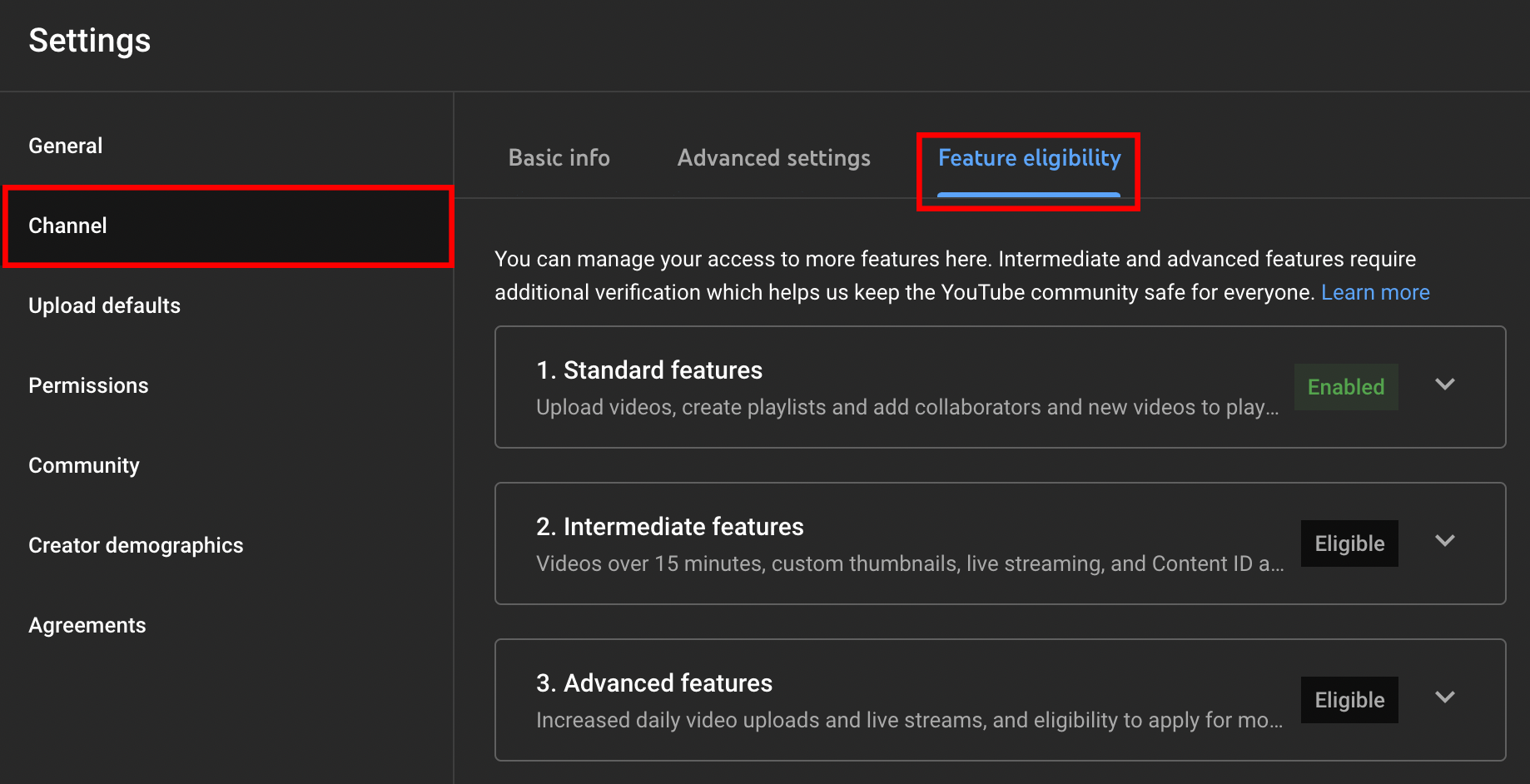
4. Under intermediate features, click Verify Phone Number and follow the on-screen prompts.
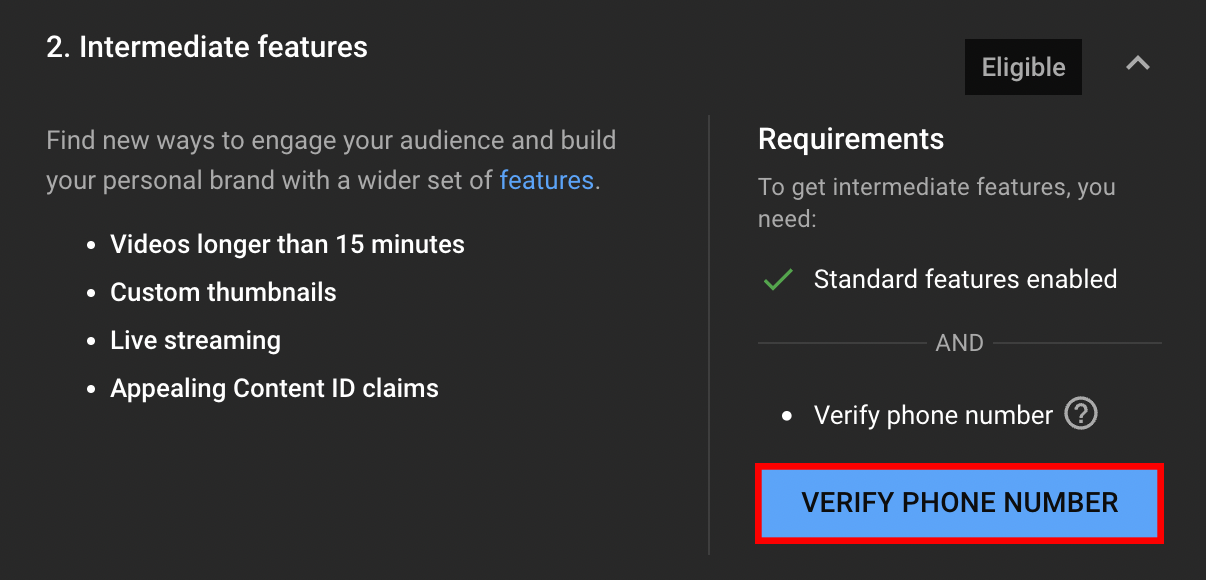
Add a Banner and Video Watermark to Your Channel
At this point, you can also add a banner and video watermark to your channel.
A channel banner is a long, horizontal image that appears at the top of your YouTube channel's homepage. If you design it well, it will quickly communicate what your videos are about. Here's an example from the Poké Daxi YouTube channel.

A video watermark is a small image in the bottom-right corner of all your videos. When viewers click or hover over the image, YouTube will prompt them to subscribe to your channel. You can make this image your channel logo or whatever you think is best for branding your content.
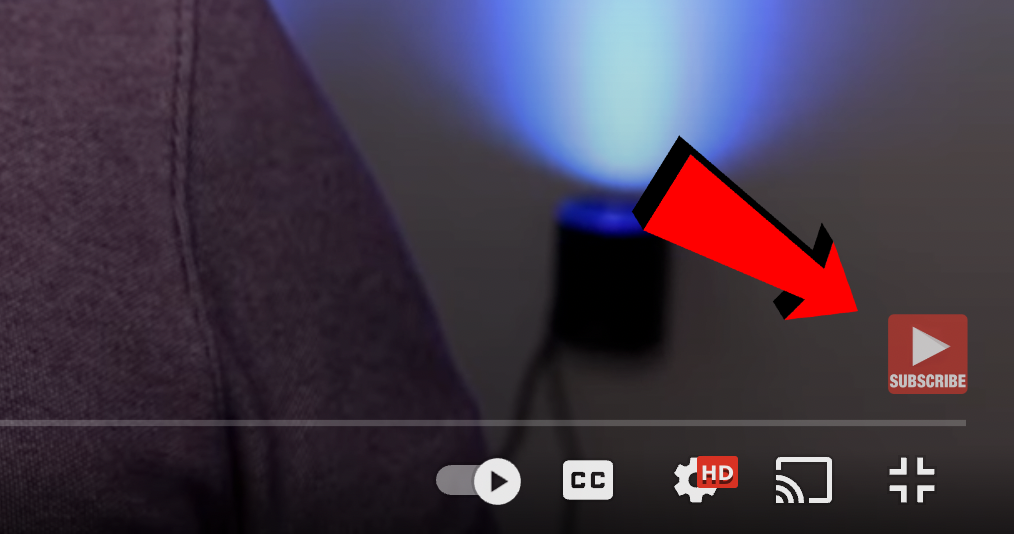
Q: Do I need to have a banner and watermark before I start uploading videos?
A: No, you do not need to have a banner and watermark first. Get to creating your content, and as you start building momentum come back later to add these.
How to Add a Banner and Video Watermark to Your Channel
Once you've created your banner and watermark, follow these steps to add them to your channel.
1. Go to the YouTube Studio and click Customization in the left navigation bar.
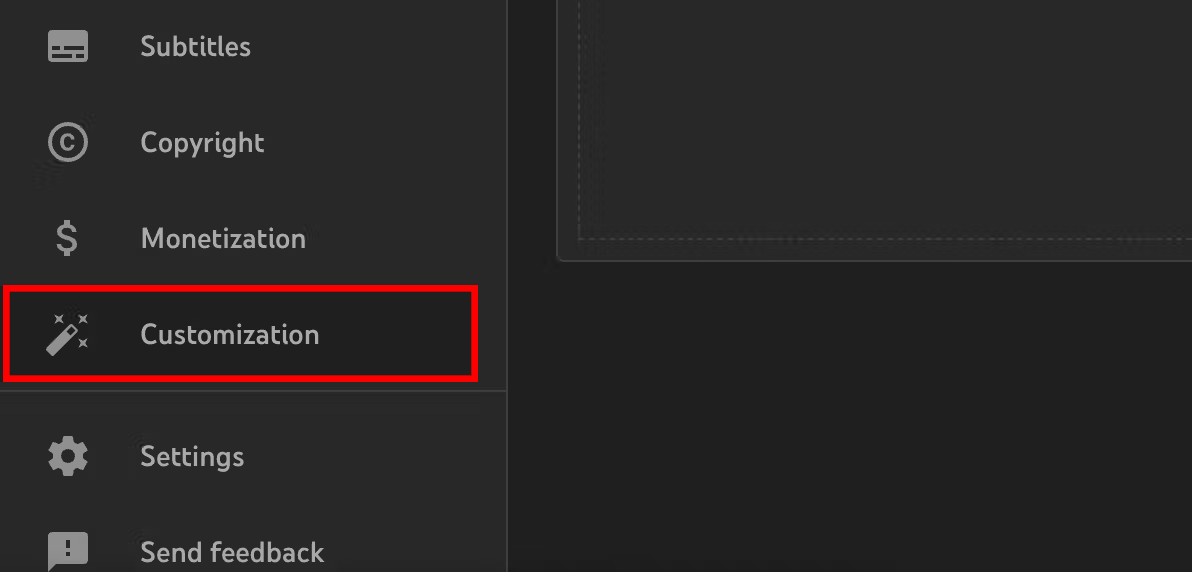
2. Click the Branding tab.

3. Find the banner and watermark sections. Click Upload to add each asset to your channel.
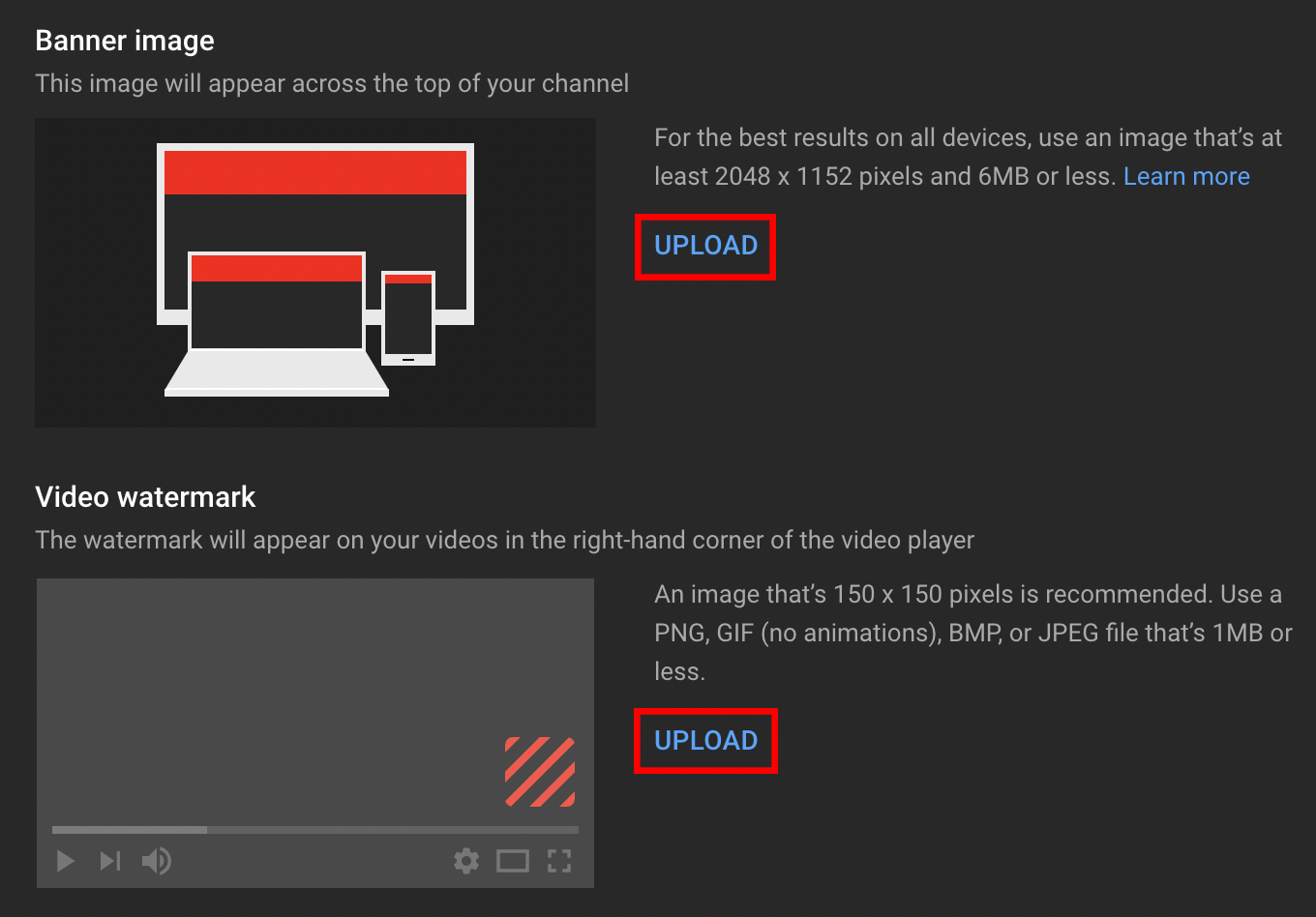
Tips for uploading YouTube banners:
- Minimum image size: 2048 x 1152 px with a 16:9 aspect ratio.
- Maximum allowable file size: 6 MB
Tips for uploading video watermarks:
- YouTube recommends dimensions of 150 x 150 px.
- Acceptable file types: PNG, GIF (no animations), BMP, and JPEG.
- Maximum allowable file size: 1MB.
Add Details to the About Section
Now, tie everything together with your YouTube "about" section. This should provide a holistic channel description that helps your viewers in the best way possible.
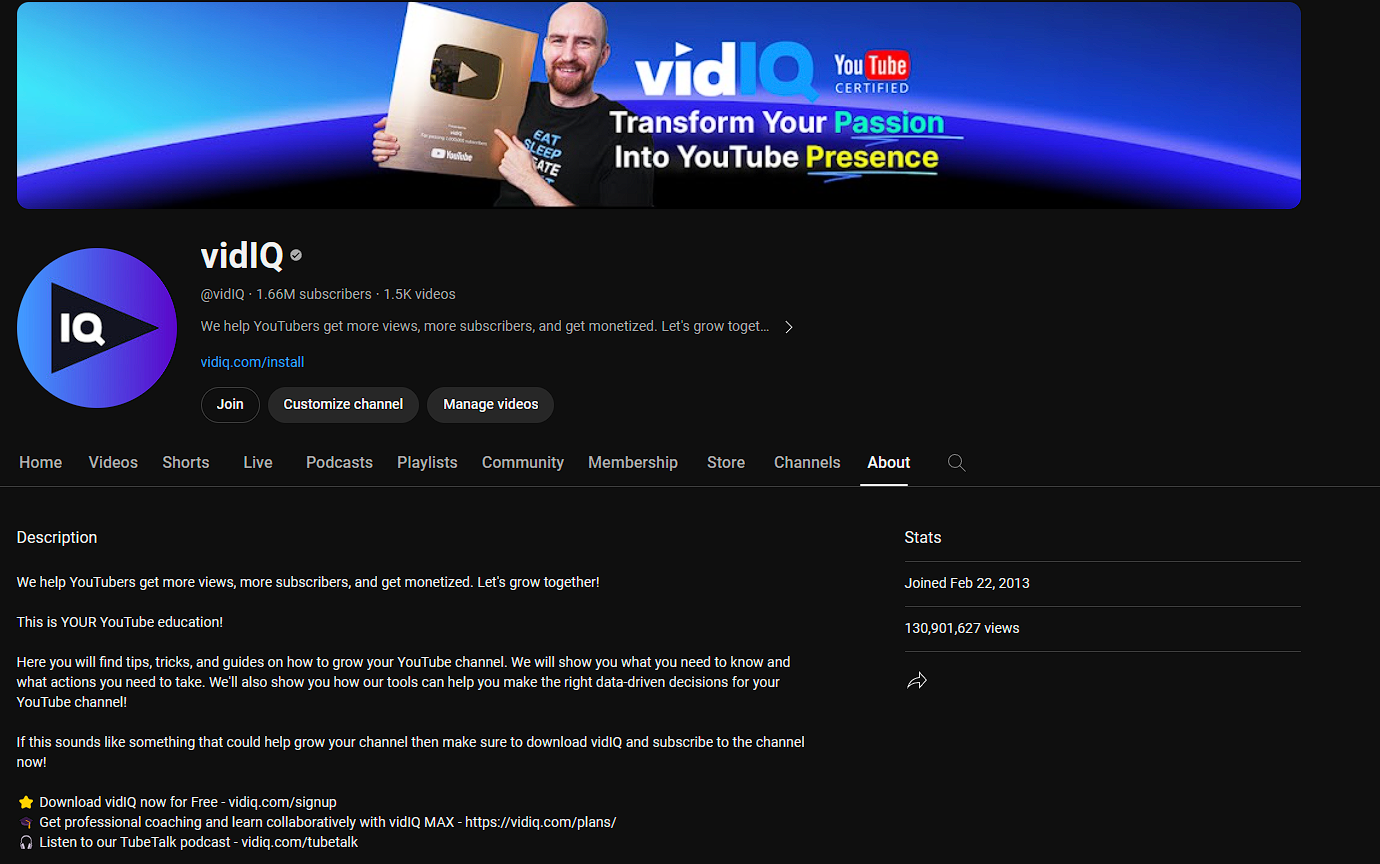
Try to communicate what you want to achieve on the channel and how it benefits your audience. If everything is cohesive, you'll have a good-looking channel!
3. Find Your YouTube Niche (Channel Topic)
This is essentially how to start a YouTube channel for beginners: pick a clear niche and focus on your audience.
Your niche is the specific topic your channel will focus on. It sets you apart and is the main reason viewers will choose your videos. Channels that zoom in on a subject usually attract viewers who are really interested in that area.
And there are plenty to choose from:
- Gaming
- Cooking
- Technology
- Makeup and beauty
- Fitness
- Pets and animals
- Health
- Finance
- Business
- Comedy
- Music
- Sports
- Vlogs
- And so many others
But if you really want to stand out, find a niche within a niche. For example, you might create a channel about how to cook Caribbean food instead of focusing on all cooking styles, like American, Italian, Spanish, etc. Your broad niche would be "cooking," and your sub-niche would be "Caribbean recipes."
Need help finding your YouTube niche? Or ideas for starting a YouTube channel? Here are seven tips to discover your youtube niche.
4. Identify Your Target Audience
After you decide on your niche, thinking about your audience becomes a lot simpler. Knowing who you want to reach will shape how and when you share your videos.
Here's why:
- Understanding what your viewers need (information, entertainment, guidance, instructions) helps you develop better video ideas.
- You can post videos at the right time of day when you know your audience's viewing habits.
- Knowing viewers' likes and dislikes allows you to make enjoyable content.
Some of this knowledge comes as you build an audience. But even now, you can guess a few things about your potential audience.
Let's say you want to create a channel about working remotely around the globe – becoming a digital nomad. Your audience might be younger adults in their 20s or early 30s who can afford to travel non-stop. They might not have established any roots or started a family yet, which allows them to move from country to country.

Do they need tips on international travel? Do they dislike staying in one place for too long? Does it matter what time you post on YouTube if your viewers are global citizens?
These questions help you plan content around viewers' lives.
5. Create a Value Proposition for Your Viewers
So far, you've discovered your channel's topic and who your viewers are. Now it's time to make a promise to everyone who comes across your video content.
We'll call this promise a value proposition. It's a brief statement that explains what your channel is about and what viewers gain by watching your videos.
Here's an example: "Creator-obsessed YouTube education." That's our value proposition for the vidIQ channel, and it makes two things clear:
- We're obsessed with helping creators reach their goals.
- We specialize in YouTube education and coaching.

Having a slogan like this does more than help viewers understand you; it also helps you make the right content. You can avoid making videos that don't align with your mission or viewers' interests.
6. Find Your Competitors on YouTube
As a YouTube content creator, it's important to know who your competitors are. It's not that you need to battle with them all the time. Or try to upstage their videos so your channel gets more views than theirs.
More than anything, having competition inspires you to make better videos. It gives you another creator to watch, learn from, and measure your content against. And when you're ready, sometimes it makes sense to collaborate with competitors because you share overlapping audiences.
You can do some light YouTube research to see which channels are similar to the one you're planning. All you have to do is type common topics or queries into YouTube's search bar (related to your niche) and see which channels pop up. Another easy method is simply using vidIQ’s Competitor Tracking tool to keep up to date with your top competitors’ stats.
But when you've created 15-20 videos, you can use this guide to create a more accurate list of your biggest competitors.
Pro Tip: With vidIQ’s browser extension, you can view powerful insights directly on YouTube, from video views and trending content to engagement metrics, without leaving the platform.
7. Create a List of Video Ideas
It's helpful to have a few video ideas before you start posting on YouTube. That way, you'll spend less time thinking and more time creating. Pretty soon, you'll build momentum instead of wondering, What should I film next? after each upload.
YouTube video ideas come from many places. You can research:
- What competitor channels are posting
- News within your niche
- Trending topics within your niche
You can even recreate YouTube videos that already exist, taking the time to add something new and insightful to the conversation.
But if you need more guidance, here are seven incredible ways to develop video ideas.
8. Test Your Video Ideas with Keyword Research
Now that you have a list of video ideas, it's time to test their popularity on YouTube.
One way you can do this is with keyword research. This is the process of discovering which words viewers use to search for videos on YouTube.
For example, someone might type "spinach gardening" to see videos that show them how to plant and grow spinach. Another viewer might type "become a realtor" to find other real estate agents who can explain that career path.
If you know which search terms your potential viewers are using, you can get more views on YouTube. All you have to do is add those relevant terms – in other words, YouTube keywords – to your video titles and descriptions. That small but impactful task tells the search engine which viewers to serve your content to.
vidIQ’s Keyword Research tool shows you exactly what your audience is searching for and how to rank higher for those terms.
Want to know which search terms align with your video ideas? Or how many times a month do viewers use specific keywords?
Read this guide to learn the basics of YouTube keyword research.
9. Get the Right Equipment for Your YouTube Needs
How much does it cost to start a YouTube channel? That's what many new creators want to know.
The short answer is it doesn't cost a thing. You don't have to spend any money when you go to YouTube and set up your channel today.
The long-term cost comes after you create your channel. But the exact number depends on the type of videos you want to make.
Realistically, you might need any of these items:
- DSLR video camera or smartphone for recording
- External microphone
- Lighting equipment
- Video editing app or desktop software
- External hard drive for storing video files
- Tripod
- Memory cards
In the beginning, you could probably get away with using your smartphone to record videos. But some content requires more than that. The key is not to rush into buying expensive gear before you’ve even proven your concept. Start with your phone, post a few videos, and see if you enjoy the process of creating and uploading consistently. Once you’ve built a rhythm and confirmed there’s interest in your content, then you can consider upgrading to better lighting, a microphone, or a dedicated camera. This way, you’re investing in your channel only after you know it’s something you’ll stick with.
If you're recording tutorials indoors and the lighting isn't great, you might need external lights. But lighting won't be your problem if you're vlogging in the sun all day. Then it might be producing quality audio or needing a tripod to balance your camera. It truly depends on the content.
10. Post Your First Video
This is what you've been waiting for all along to post your first YouTube video. Now that you've found a niche, identified your audience, developed video ideas, and more, you're ready to take that leap.
Here's how to upload a YouTube video:
1. Go to YouTube.com and click the camera icon near your profile picture.
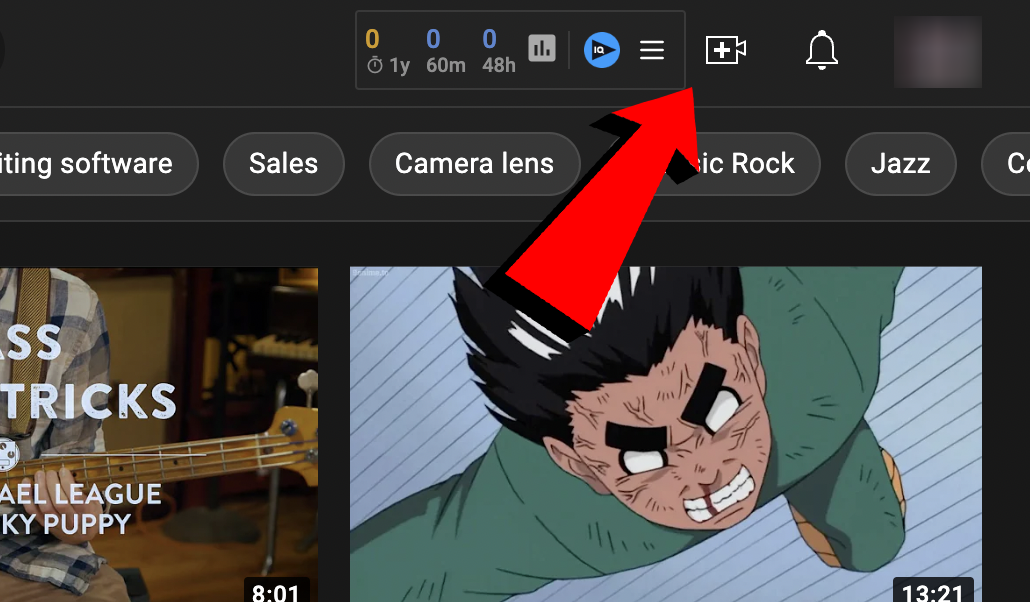
2. Select Upload Video from the menu.

3. Drag and drop videos into the upload space or click Select Files to browse for videos on your device.

Follow the on-screen prompts to complete your upload!
Planning Your YouTube Channel Growth Strategy
Think of a clear game plan as the roadmap for your channel. While organic growth is key, having a simple plan can speed things up.
A new YouTube channel won’t have the same authority as established ones, so consistency is critical.
Start by setting clear goals for your first 90 days. These might include a set number of videos, reaching a target watch time, or hitting a certain engagement level. Breaking large goals into small steps makes progress feel real.
Then, create a content calendar that mixes three styles of videos:
- Foundation content - Solid, evergreen videos that cover basic questions in your subject.
- Trending content - Videos that tap into current popular topics or events.
- Community content - Videos where you respond to comments, answer questions, or share viewer feedback.
Set aside time for video creation, refining your content, and chatting with your audience. Many new creators are surprised at how much time it takes to reply to comments, check performance, and tweak ideas.
Finally, pick 3-5 key results to watch, like average view duration, click-through rate, and overall engagement. These numbers help you see what works and what might need a little change.
Keep in mind that steady posting beats trying to be perfect. A regular schedule that you can keep up with is much better than long breaks between bursts of activity.
Pro Tip: Don’t overthink it. Start YouTube channel content creation with your first video, and improve along the way. Don’t get caught up in analysis paralysis.
Bonus Tips
1. Learn How YouTube Works
Sometimes, YouTube gets confusing when you approach it as a creator and not just a viewer. There are many things to research, such as how to make better videos, get monetized, and measure your progress along the way.
But you can start by learning the YouTube basics:
- The YouTube Partner Program
- Following trends that can become video ideas
- Creating attractive thumbnails
- Writing engaging video titles
- Writing powerful video descriptions
- Optimizing your videos for YouTube search
- Assessing your YouTube analytics
- Knowing how the YouTube algorithm works
- Avoiding copyright claims and strikes
- Learning the YouTube monetization requirements
- Understanding YouTube's rules, such as the community guidelines and monetization policies
The links above will give you an overview of YouTube so you can start growing your channel.
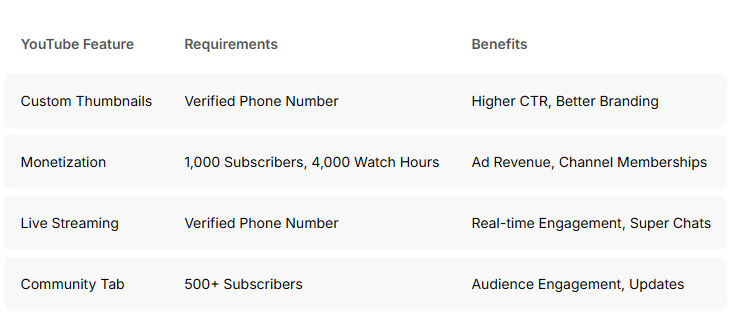
2. Create a Diverse Content Plan
YouTube now has multiple formats through which you can raise serious, sustainable revenue. So, try everything out!
For example, you can create Shorts with the goal of reaching viewers beyond your niche. Shorts don't take as long to create, so it’s feasible to pump out shorter videos instead of longer ones. With the use of the AI-powered clipping by vidIQ, your job becomes even easier. From a single long-form video, you can create over 10 Shorts!
YouTube livestreams, on the other hand, are generally longer and require some monetary investment for the equipment and software you'll need. And unless you have a strong core following, you won’t be getting thousands of views on the first try. But over time, streaming provides a new way of making money on the platform with Super Chats. And since YouTube makes the video-on-demand version available instantly, you can monetize them like long-form videos.
All in all, it’s important to try things out and see what works. Keeping an open mind might lead you to find the ideal type of content mix for you and your channel!
3. Equipment Must-Haves for New YouTube Creators
You can start with a smartphone, but the right gear makes a big difference. When you're just getting going, think about three key points.
1. Audio Quality - Good sound is important. A basic lavalier microphone (around $20-30) that works with your phone can really boost your audio. If you record on a desktop, try the Blue Snowball (around $50-70) or Samson Q2U (roughly $60-80). These options work well if you're on a budget.
2. Lighting - Natural light near a window can be enough to start. Later on, a simple ring light (about $30-50) or a pair of softbox lights (about $60-100) helps clear up shadows and gives your videos a cleaner look.
3. Camera Stability - Shaky videos are hard to watch. A small tripod for your phone (roughly $15-25) or a desktop stand for webcams (around $20-30) is a smart investment before you spend a lot on a camera.
Read More: How To Win on YouTube Without Fancy Equipment
Remember, the strength of your content matters more than fancy production. Many famous channels started with basic tools and a strong message. Upgrade gradually as your channel grows and your needs become clear.
By following these steps, you’ll know exactly how to start a YouTube channel that has a real shot at success.
Now that you've created your YouTube channel, learn how to get more subscribers as a new creator!
FAQs
How do I get my first 1,000 subscribers?
Keep making valuable videos. Optimize your titles and thumbnails, interact with your viewers, work with other creators, share your work on social media, and see what your audience likes best.
How much does it cost to start a YouTube channel?
Creating a YouTube channel is free. Costs come from buying gear if you need it, but many creators begin using just a smartphone. Gradually invest in new equipment as your channel grows.
How do I choose a YouTube niche?
Pick a topic you care about and know well. Check out what similar channels are doing and see if people are interested. Narrowing your focus a bit can help you stand out from the crowd.
How do I start a YouTube channel for beginners?
You need a Google account, a clear idea for your channel, some basic recording gear (like a smartphone or camera), and plenty of content ideas. Verifying your phone is a good step for extra features.
Should I focus on YouTube Shorts or long-form content?
Try mixing both. Shorts can quickly reach new viewers, while longer videos help create a deeper connection. Experiment with each type to see what fits your style.
When can I start making money on YouTube?
You can join the YouTube Partner Program after reaching 1,000 subscribers and 4,000 watch hours over the last year. There are also other ways to earn through sponsorships, affiliate deals, and merchandise, and fan-funding.
Is it too late to start a YouTube channel in 2025?
Not at all. Starting a YouTube channel in 2025 still offers huge opportunities, especially as new niches, formats, and audiences continue to grow. While competition is higher than a decade ago, fresh creators who focus on unique value, consistency, and smart optimization can still build successful channels from scratch.
What equipment do I need to start a youtube channel?
You don’t need any costly gear to start a YouTube channel. Many successful creators began with just a smartphone and free editing software. Good lighting, clear audio, and engaging content matter more than expensive cameras. You can always upgrade equipment later once your channel grows.

